Posted by Matthew C. Keegan Know How
Continually losing air in the same tire is a certain sign that a leak is present. If you find a hole, then it’s a simple matter of plugging it, adding air and going on your way. Unfortunately, not every tire leak is easily found, making it all the more difficult to resolve a persistent problem. Here are some steps you can take to identify and fix a leak.
1. Add Air to the Affected TirePut sufficient air in your tire according to the pounds-per-square-inch (PSI) recommendation listed in the owner’s manual, on the placard found on the driver’s door jamb or on the inside of the glove box. The tire should be cold when inflating to ensure an accurate reading. Inflate each tire on your car and the spare accordingly.
2. Observe CarefullyIf the affected tire continues to lose air faster than the other tires, then you have a leak. You’ll find most leaks by visual inspection — a protruding nail, a hole or a cut are obvious signs — and by listening to or feeling around the tire for air release. Remove nails and fill holes, but any puncture in the tire shoulder or sidewall areas means you’ll have to replace the tire.
Some leaks are imperceptible under normal observation, but there are two ways to find a leak. First, cover the affected tire with a solution of soap and water. If a leak is present, the impacted area will bubble up, revealing the leak. Second, you can always remove the tire from the car, then submerge it in water. Bubbles will soon form, making it easy for you to identify the source of the leak.
5. Identify the Affected ComponentNot all leaks can be directly attributed to the tire. The tire itself may be in top condition, but there are two other ways a tire may leak.
First, a bad valve stem can cause a tire to lose air through the valve base or body.
Second, the wheel-mounting surface may be defective. It can be damaged by hitting a pothole or through corrosion.
These two hidden problems become visible through the soap-and-water test or by submerging the tire.
6. Replace or SealYou can resolve a tire leak in two ways.
First, if the leak is due to the tire itself, then a tube sealant kit can handle most small leaks.
Second, for leaks not involving the tire directly, replacing a worn valve stem or a damaged wheel should provide a comprehensive fix.
Check out all the driveline & wheel parts
Photo courtesy of Flickr.
Categories
Know How
Tags
car care, flat tire, flat tire causes, tire care, tires, wheels
Matt Keegan has maintained his love for cars ever since his father taught him kicking tires can be one way to uncover a problem with a vehicle’s suspension system.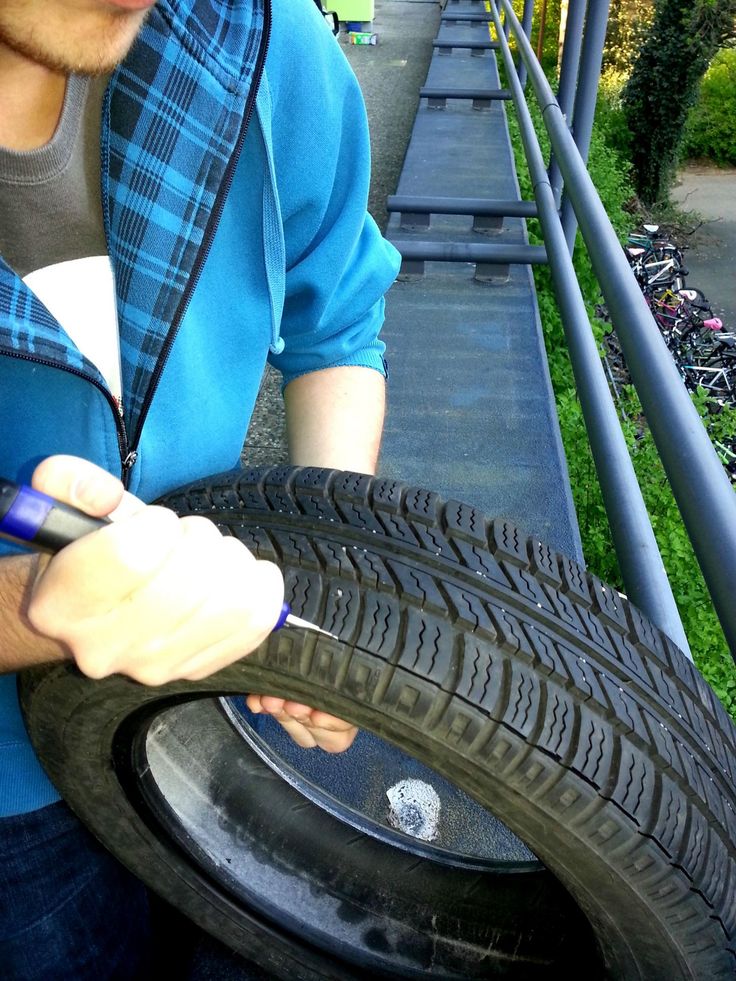 He since moved on to learn a few things about coefficient of drag, G-forces, toe-heel shifting, and how to work the crazy infotainment system in some random weekly driver. Matt is a member of the Washington Automotive Press Association and is a contributor to various print and online media sources.
He since moved on to learn a few things about coefficient of drag, G-forces, toe-heel shifting, and how to work the crazy infotainment system in some random weekly driver. Matt is a member of the Washington Automotive Press Association and is a contributor to various print and online media sources.
Having a tire that’s leaking air can be incredibly frustrating to fix. It can seem impossible to find where it’s leaking, but there are a few ways to figure it out.
A tire that is leaking air is something that you don’t want to ever have to deal with. Between the dangers of having a blowout or the headache of constantly putting air in it, it’s best to get the tire fixed. No matter if you decide to try to fix it yourself or take it to a shop, the first step in getting it repaired is to find out where it’s leaking. In this article, we’ll go over a few of the best ways to find out where a tire is leaking from.
The easiest way to find a leak in a tire is to just use soap and water. By running soapy water over the tire, an air leak will bubble up in the soap and you’ll know exactly where it’s leaking. You can also submerge the tire in water and look for bubbles and even try finding the leak without any water.
By running soapy water over the tire, an air leak will bubble up in the soap and you’ll know exactly where it’s leaking. You can also submerge the tire in water and look for bubbles and even try finding the leak without any water.
Everything in this article has come from a combination of talking with pros in the industry, compiling online research, and hands-on experience of my own as a technician in an automotive shop. What you read here are the exact ways that the professionals find leaks in tires, and they’re actually pretty simple to do on your own!
The fastest way to find a leak in a tire, and the way that’s most commonly used by professionals, is to just utilize a soap and water mixture. As easy as that may sound, it really works because the soapy mixture will start to bubble up anywhere that air is leaking out of the tire. So let’s take a look at how to do it.
All that you’ll need for this method is water, soap, and a spray bottle.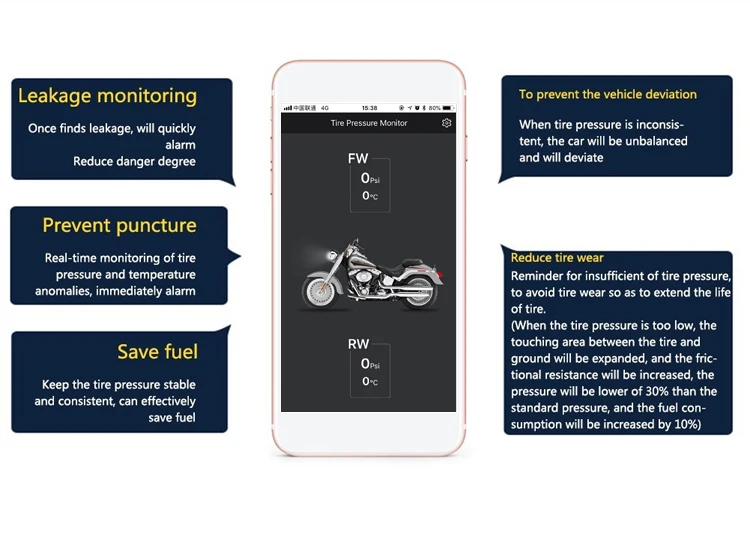 The type of soap doesn’t even really matter, it just needs to bubble. So it could be dish soap, engine degreaser, etc., anything that bubbles! Once you have those three items, just follow these simple steps:
The type of soap doesn’t even really matter, it just needs to bubble. So it could be dish soap, engine degreaser, etc., anything that bubbles! Once you have those three items, just follow these simple steps:
If using soap and water didn’t work, it is usually an indication that the leak is a bit faster than you might have thought. Soap and water works great for slower leaks and when something is stuck in the tire like a nail. But if it’s leaking too fast, you might need to try submerging it in water to find the leak. This involves a bit more work, but just follow the steps below and you will be able to get it done:
Soap and water works great for slower leaks and when something is stuck in the tire like a nail. But if it’s leaking too fast, you might need to try submerging it in water to find the leak. This involves a bit more work, but just follow the steps below and you will be able to get it done:
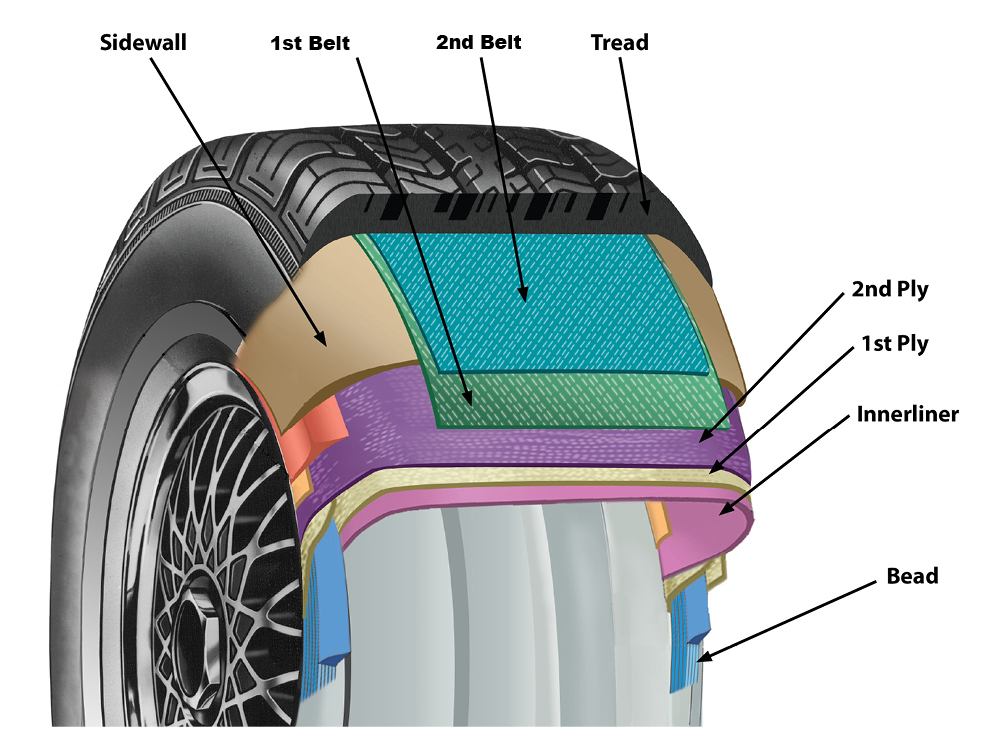 As air escapes the tire, it will create bubbles that rise to the surface, making the leak easy to find.
As air escapes the tire, it will create bubbles that rise to the surface, making the leak easy to find.If you don’t have access to soap and water or the ability to submerge the tire, you’re down to your last option — trying to find the leak without water. This is really only possible if there’s obvious damage to the tire or it’s a fast leak that you can hear, but it’s worth trying if you have no other options.
Start by ensuring the tire has the proper amount of air in it before doing anything else. Once it’s pressurized, start to visually inspect the tire for issues. This could be a hole, a slash, or something sticking out. Run a rag along the tire and see if it catches on anything sticking out. If you don’t notice anything, then try to listen for the hissing sound of air escaping.
If all else fails and you can’t find the leak, take the tire or the vehicle to a shop and let them find it for you!
One common mistake that people make when they have a tire that’s leaking air is that they drive on it for too long. This refers to both driving on a quick leak to get the car to the shop and also continuing driving on a tire with a slow leak that you just keep putting air in every few days or every couple of weeks.
This refers to both driving on a quick leak to get the car to the shop and also continuing driving on a tire with a slow leak that you just keep putting air in every few days or every couple of weeks.
If you have a tire that’s leaking fast and you want to try to get it to the shop to get repaired, be mindful of just how fast it’s leaking. Your tire does not need to go completely flat before it fails while driving, which could lead to a blowout and cause more trouble than it’s worth.
If you have a slow leak, don’t just try to live with it and put air in it whenever you need to. Eventually, something might come up and you can’t get it to the pump, or you could just forget to fill it up and try to drive on a low tire on accident.
If you have a tire that’s going low and you think that there might be something in it, like a nail or a piece of glass, you’ll likely want to try to find what the issue is. If you can find what’s in the tire and put a temporary plug in it, that will likely suffice enough for you to get the vehicle to the shop to be repaired.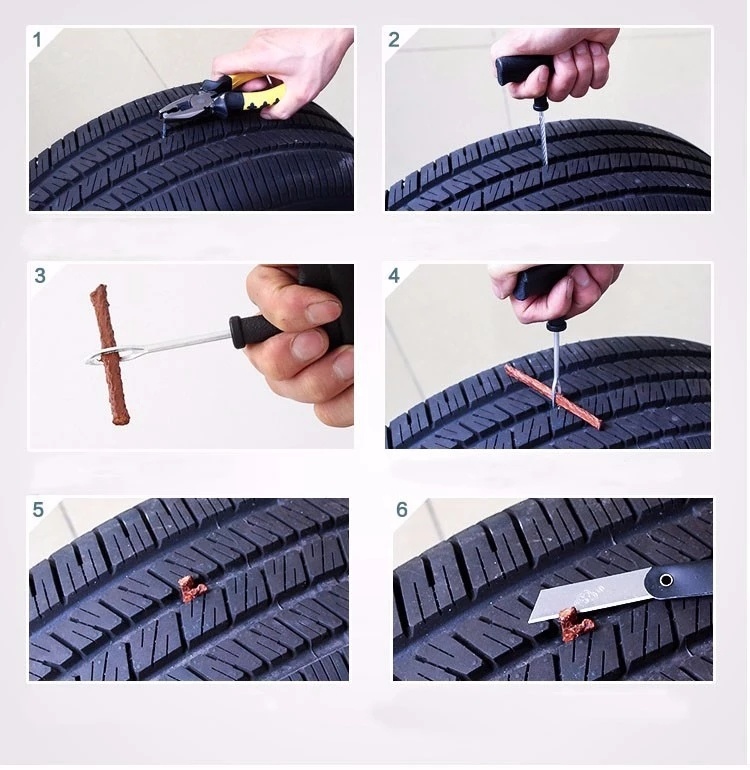
But do not blindly run your hand along the tire and try to find something sticking out! If it’s a nail or a piece of glass, for example, you could very easily cut your hand wide open by doing so. A trick that the pros use is to run a rag along the tire instead of their hands, as mentioned above. This way, the rag will catch on anything sticking out rather than your hand. It’s easier that way and much safer!
Even though people have been using plug kits for decades to fix holes in their tires, they really are not a high-quality repair that’s meant to last forever. They are great for short-term use and getting the tire and vehicle to the shop to be repaired, but they shouldn’t be relied on for long-term use.
They can wear down and get pulled out over time, or the seal that they make can very easily wear down and develop a slow leak. If you go to a reputable shop, they will now use what’s known as a patch-plug kit. It’s a combination of a plug and a patch that’s inserted from the inside of the tire and is designed to be a permanent fix. If applied correctly, a patch-plug will last for the life of the tire.
If applied correctly, a patch-plug will last for the life of the tire.
In connection with the transition to winter tires, the question arose in my head, how to achieve complete and long-term sealing when landing tubeless!? It is known about corrosion on humps from the inside, but I specially in the spring peeled off these places with a drill and a brush, primed, painted, made sure that the installer smeared it with black when landing with this compound (by the way, what is it?). but still had to pump up at least once every two weeks. What can I say — I even have a new car with forged wheels and tires Bridge — half the atmosphere goes in two weeks!
And in winter the situation will be worse, apparently.
You can, of course, smear the gap in a circle with transparent silicone, but. smacks of a collective farm and finally I want to solve the issue in the bud! :hysteric:
Who has any ideas?
How often do you pump?
if the edge of the rim is evenly sanded and painted, then the rest is in the sealant.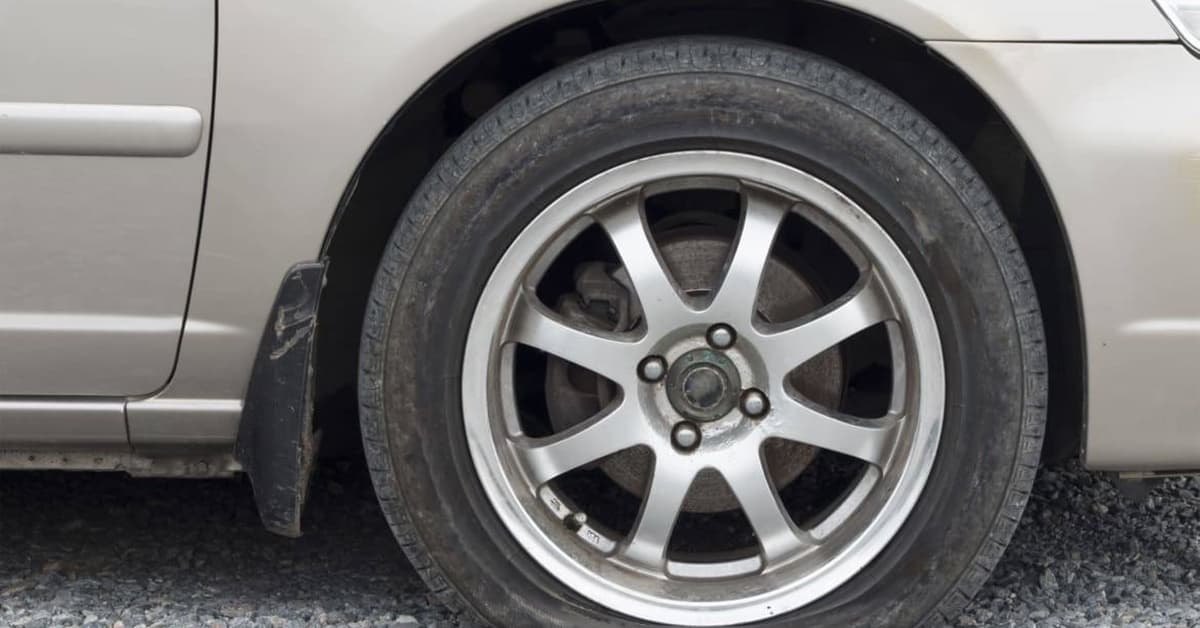 It’s not the white soap that is usually used in tire fitting, namely the special sealant, the installers have it, but they save it and smear this rubbish soap-mastic. I warned the sealant at different times, from afar I observe and they, as if on purpose with soap, I force them to wipe everything with a rag and then smear it with sealant, the sealant is like thickening a transmission with lithol, black-brown, gradually dries and sticks.
It’s not the white soap that is usually used in tire fitting, namely the special sealant, the installers have it, but they save it and smear this rubbish soap-mastic. I warned the sealant at different times, from afar I observe and they, as if on purpose with soap, I force them to wipe everything with a rag and then smear it with sealant, the sealant is like thickening a transmission with lithol, black-brown, gradually dries and sticks.
You also need to look and change the nipples completely, nipple, there are Chinese rubbish, dangerous, but there are good ones. Its hole on the disk can also be smeared with sealant.
On soap, even branded factory l. disks from soap begin to descend in 2-3 weeks.
A sealant for a very long time, pressure control once every half a year.
@lelik, the paint on the hump is most likely coming off. Before putting on all the humps on the old disks, I rubbed it with a knife so that they would blam, and then assembled it with a sealant.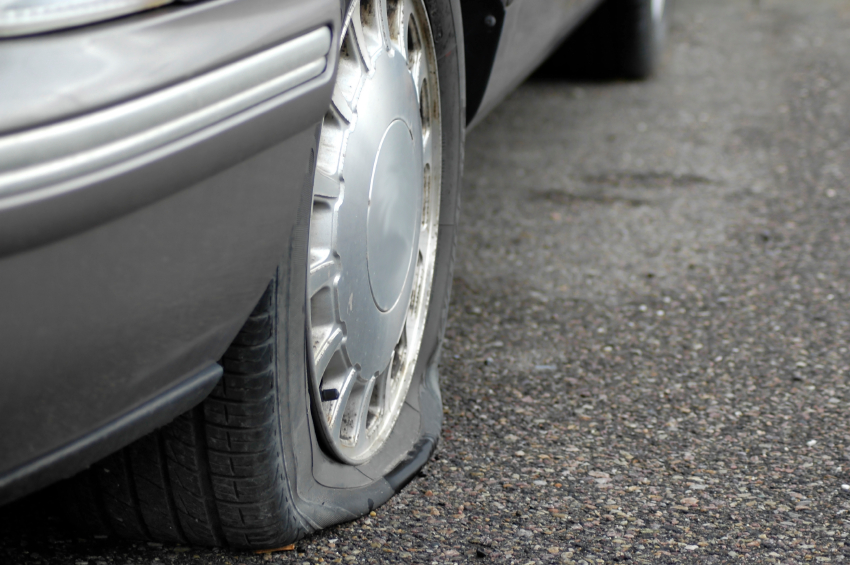 Pah-pah 2 years left, the 3rd went.
Pah-pah 2 years left, the 3rd went.
One even bubbled with sealant, let it down, stuffed another abro into it with a strip of cardboard, but there was no way to pump it, it snorted from both sides. I felt it with my hands, pressed it, it pumped up, it stopped poisoning. There, in Hakka, the inner belt is very narrow and there is an entry to the outer edge of the disk, which does not enter everywhere. Previously, they stood without this mound. And it bubbled under the weight, I pulled it a little, a millimeter, it stopped. I think it's the same tires. Because the kama is ancient, it didn’t poison, the bridge was also all cracked, it held.
Added after 6 minutes 0 seconds
I'm shocked in short. Either try to rearrange them for casting, or get rid of them.
I will add to this topic a few of my thoughts and what I encountered when preparing tires.
In my automotive life, it so happened that I drove most of it on diagonal tube tires, and even when in 98 the 29th appeared for personal use, which has tubeless tires in its design.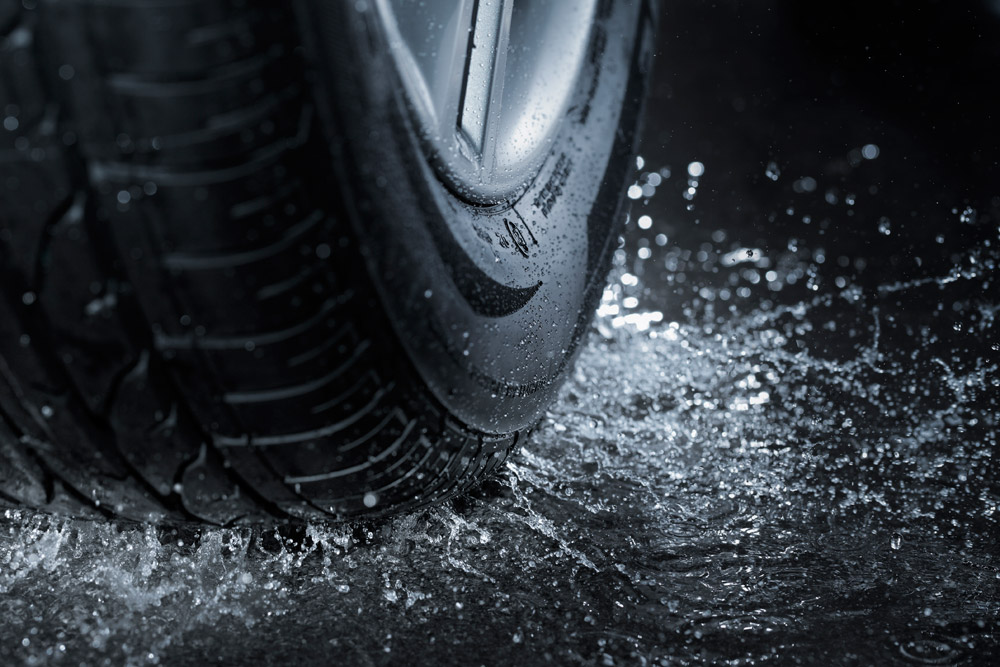 There were chambers in her tires and I did not take them out, because up to a speed of 130 km / h they can be operated for quite a long time, and my cruising speed has always been somewhere around 100 km / h. But on those disks, on a 14 "hump - a locking collar for the tire bead - for some reason there was one and only on the outside.
There were chambers in her tires and I did not take them out, because up to a speed of 130 km / h they can be operated for quite a long time, and my cruising speed has always been somewhere around 100 km / h. But on those disks, on a 14 "hump - a locking collar for the tire bead - for some reason there was one and only on the outside.
In the fall, my son brought me an almost new studded wheel from 3110 KAMA-EURO, but on a rusty and native 10-shnoy forging. Pumped up. A day later it went down to "0". I looked through the entire treadmill - there are no punctures, which means it poisons the rim. It’s a long way to go from the garage to the tire shop, but I must say that all my life I’ve always overboarded myself on personal cars “once” — my grandfather taught me since childhood. Therefore, I decided to overboard myself and what came of it:
1. The tire beads sat very firmly and to tear them off the rim flanges with mounts without damaging the inner surfaces of the beads - it is simply impossible, although both mounts were correct - they were still from my first car - VICTORY GAZ M20 1946 years old - Properly drawn and polished over 40 years of service with all four edges.
Therefore, I welded an appropriate stop to the garage box - three tons of separation - under the hydraulic jack and slowly and easily removed both sides of the tire from the humps. On the first photo.
2. But then the most interesting thing began - how to remove the tire without damaging the rim flanges - the rubber on them is soft and very tender, and it's clear why. And the seating surfaces of a tube bias tire just look like oak compared to them.
Each movement of the crowbar along the edge of the rim strove to wrap the rubber and pull out a piece! But there was a way out here too - neutral ordinary silicone grease was sprayed on every movement of the mount and things started to work.
3. The valve of a tubeless wheel is simply not inserted into the disc by hand - it was transported for more than an hour, but never installed. I had to buy an installer key, and having lubricated the hole in the disk and the valve seat with bead sealant for tubeless tires, in one motion quickly and easily installed the valve in place. Photo 2.
Photo 2.
4. Having prepared the disk, having carefully sanded the landing shelves and humps, galvanizing, priming and painting the disk, proceeded to the assembly. And again, a can of silicone grease came into play. The slightest movement was lubricated - rim - mounting - tire. After the tire was put on the disk, the main thing was to put the tire on the rim shelves hermetically evenly and without distortions.
When 2410 went to the people in 1985, they already had tubeless tires, but the sealant for the bead of tubeless tires at that time was in great short supply and many owners and taxi drivers instead used the usual BSK alcohol-castor liquid, mainly the color of red wine, consisting of butyl alcohol and castor oil. And this connection worked and sealed perfectly! Even today, this sealing method can be recommended to those who have had to re-bead the tire themselves, far from civilization.
Well, I bought a can of ordinary tire bead sealant - photo 3- (320r. - enough for 4 wheels, if not spilled) and painted the surface of the rim with it from the hump to the edge of the rim. Then you need to pump up, that is, put the board on the shelf immediately, and not go for a smoke - after 20 minutes it hardens and sealing may not work, because the excess sealant immediately squeezes the board out, and apply with a brush - it is attached from the inside to the lid (photo 4) perfectly evenly impossible. Therefore, do not yawn!
Then you need to pump up, that is, put the board on the shelf immediately, and not go for a smoke - after 20 minutes it hardens and sealing may not work, because the excess sealant immediately squeezes the board out, and apply with a brush - it is attached from the inside to the lid (photo 4) perfectly evenly impossible. Therefore, do not yawn!
5. There is a compressor in the garage and put the beads on the rim shelves, inflating the tire until it is fully seated, then release the pressure completely, inspect it, and pump it up to 2 kg. - not difficult.
Yes, the sealant itself looks like an ordinary liquid rubber, I had a Barnaul chemical plant, which polymerizes well under the action of oxygen in the air, i.e. hardens and turns into a rather elastic, but tenacious rubber - you can’t tear it off the tire with your fingernail.
6. The Voronezh degreaser was used as a silicone remover and surface degreaser - it is the most neutral of all solvents of the toluene group, and the least toxic and degreases any surface very well, without dissolving the paint.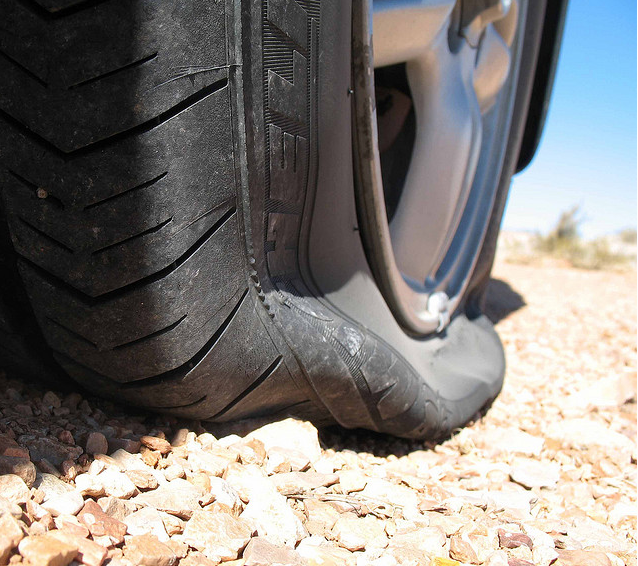 After that, the wheel stood for a day in the garage against the wall for non-descent and gladly took the place of a full-fledged winter spare tire in the trunk.
After that, the wheel stood for a day in the garage against the wall for non-descent and gladly took the place of a full-fledged winter spare tire in the trunk.
CONCLUSION: 160 re for changing shoes for one wheel and half an hour of time are indisputably cheaper than:
- all installation tools,
- half a day of time,
- and there is a complete lack of guarantee that you will not damage the tire bead.
If there is a large and non-adhering shell from accidental tearing out of the bead rubber, where will the new tire go? That's right - OUT! Or in extreme cases - on the chamber version. Therefore, before deciding on this perversion, you should think carefully - whether you can and need it. I just wanted to try. Happened. And I hope that I will not be perverted in this way any more. But for some reason I’m now looking at a summer tire and a disk - I also need to assemble it by summer - and something tells me (more precisely, my favorite organ) that now this is not the last.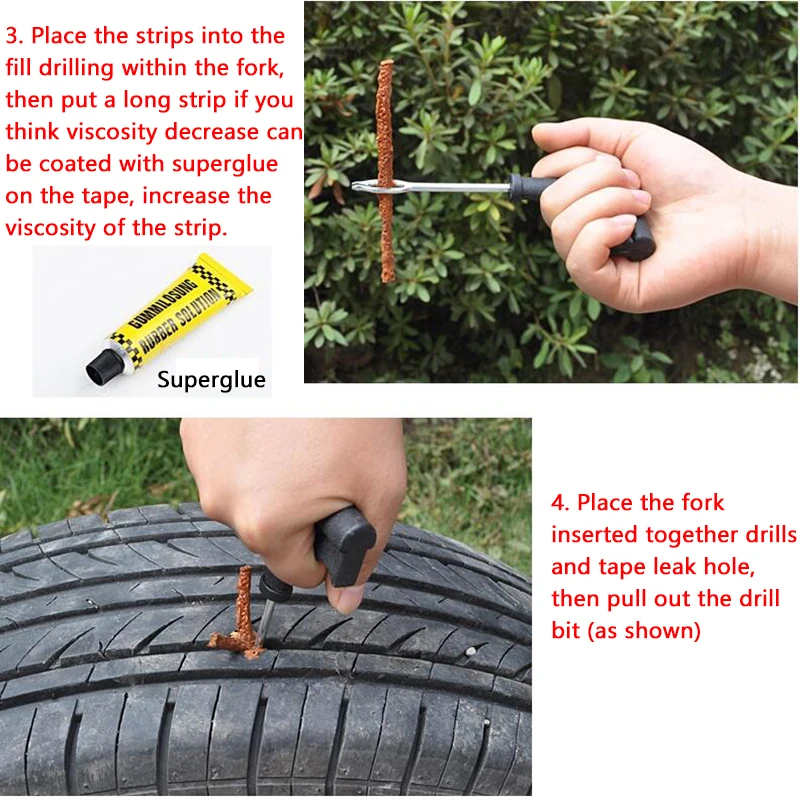 an act in this area - unless, of course, you make a simple and reliable bead dismantler = you turn the drive handle through the bike chain with your hand, the blade goes in a circle and easily lifts the bead from the wheel rim mounted on an unnecessary and worn hub. But I didn't tell you that.
an act in this area - unless, of course, you make a simple and reliable bead dismantler = you turn the drive handle through the bike chain with your hand, the blade goes in a circle and easily lifts the bead from the wheel rim mounted on an unnecessary and worn hub. But I didn't tell you that.
Source forum.allgaz.ru
The search for solutions on the topic: what to do if a flat tire between the disc and the tire should be timely and fast. It means that you need to notice the regular descent of the slope when it is slowly poisoning, and obviously until the moment when you have to leave the track on a long journey.
It's easy to do: since almost all cars now have tubeless tires, the air from them descends slowly with small defects. You can drive, noting only a slight pull towards the flat tire. But in the morning, sitting behind the wheel, it is absolutely easy to pay attention to the fact that the wheel has sunk.
Even inexperienced drivers quickly begin to carry a pressure gauge in the trunk with them. And on a number of models (Opel, Skoda, some representatives of the Hyundai family), a pressure gauge is even included in the package of on-board instrumentation. A primary school student will also be able to use it, and measurements will not take much time. Clarify the causes of blown wheels and take action as soon as a problem is detected. Otherwise, it will stand up to its full height and turn into an unpleasant sideways somewhere far from the centers of civilization, and even outside the mobile communication zone.
And on a number of models (Opel, Skoda, some representatives of the Hyundai family), a pressure gauge is even included in the package of on-board instrumentation. A primary school student will also be able to use it, and measurements will not take much time. Clarify the causes of blown wheels and take action as soon as a problem is detected. Otherwise, it will stand up to its full height and turn into an unpleasant sideways somewhere far from the centers of civilization, and even outside the mobile communication zone.
What to do if a flat tire is between the rim and the tire? First of all, find out what caused this phenomenon. And in the second - to save the existing ramp or buy a new one.
Confident replacement of old tubeless tires with tubes inside is explained by several of their advantages at once.
 Reducing heat makes tubeless tires more reliable and durable.
Reducing heat makes tubeless tires more reliable and durable. Tubeless tires maintain pressure by sealing the rubber-to-rim interface. It is achieved by applying a special composition around the entire circumference of their contact. However, in some cases, with the visual integrity of the tire, there is a clear bleeding of air from it. And it happens exactly at the junction.
There may be several motivating reasons:
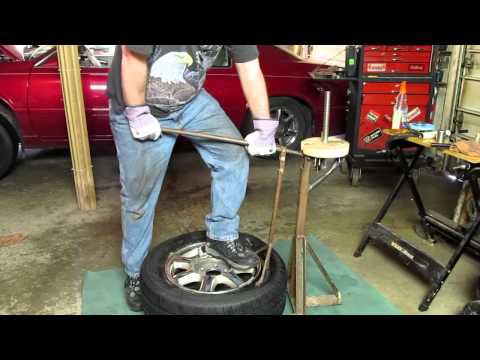 No rescue activities here
No rescue activities here Apart from the wear of the tire itself, everything else can be repaired.
What you do depends on both the situation and the condition of the individual tire components.
 By doing this with the cast, you actually say goodbye to it: microcracks will appear, the strength will rapidly decrease, and soon it will simply burst;
By doing this with the cast, you actually say goodbye to it: microcracks will appear, the strength will rapidly decrease, and soon it will simply burst; So you can decide what to do if a flat tire between the disc and the tire is possible only if you know the outgoing conditions. In the open field - by any means to get to the places marked by civilization, in the home - to deal in detail with the causes and eliminate them.
In the open field - by any means to get to the places marked by civilization, in the home - to deal in detail with the causes and eliminate them.
Source autoflit.ru
If a close inspection of the flat tire does not reveal a puncture, it is likely that the leak could be caused by a pinhole in the tread or sidewall. However, the problem may not be in the tire. The air valve stem may be leaking and must be replaced, otherwise the tire bead (when it meets the wheel) may be pressed tightly against the rim (a common problem in areas where road salt is used, which can corrode the metal surface).
Soap and water or water alone can help find the source of the leak. Mix liquid soap with water in a spray bottle. Spray all parts of the tire - tread, sidewalls, valve stem and bore (with cap removed), and along the rim on both sides - until you find a spot where there are bubbles. This is where the air comes out. This is easier to do with the wheel off, but you might be able to find the leak without removing the wheel, especially at the front when turning the steering wheel exposes the inner sidewall somewhat.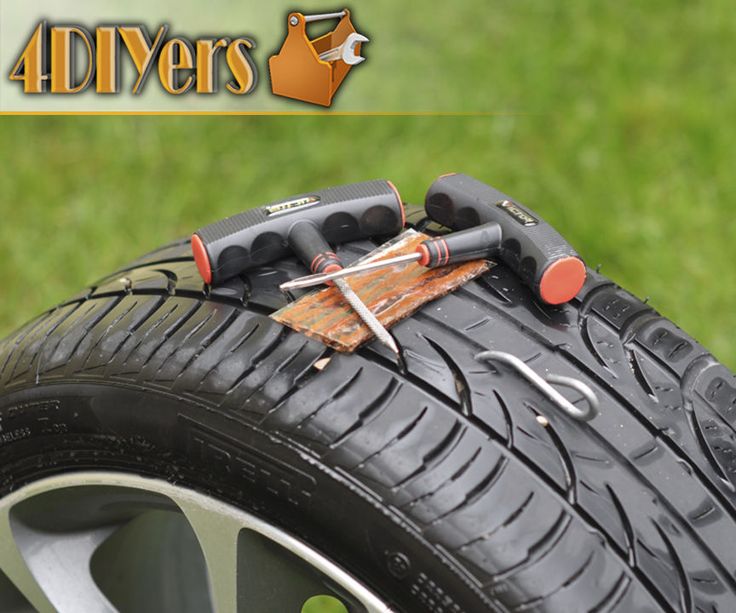
Another method is to remove the wheel and soak it in a bath of water. Bubbles form at the leak. If the tub is not large enough to wet the entire tire, do the procedure several times.
Small holes in the tread can be repaired. Large punctures cannot, and minor damage to the sidewalls (where the tread and sidewall meet) will usually require tire replacement. Leaks and valve stems (the tiny valve itself inside the tube) can also be replaced.
If the leak is due to the tire not being completely seated, sometimes removing the tire and applying bead sealant can stop the leak.
Possible solutions for leaks from the wheel seat are to remove the tire, de-corrosion and apply ball sealant before remounting the tire. Some mechanics also suggest inflating a tire with nitrogen instead of air because its molecules are larger than oxygen, potentially making them less able to slip through the smallest holes. Perhaps this is the solution, since nitrogen contains less moisture - this will prevent rust if the wheel is made of steel.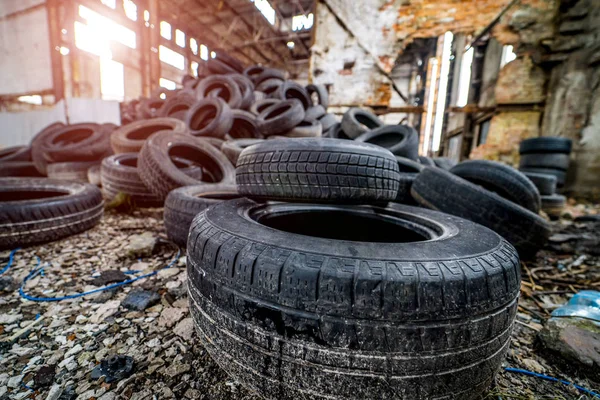
When a wheel leaks air, it will be decided whether it can be repaired or should be replaced. For example, pitting a wheel can make the metal porous and allow air to seep through. This probably justifies a replacement.
Source www.sdelalsam.su
Slow leaks occur when a tire punctures after driving over a sharp object that is stuck in your car's tire. Common culprits include nails and screws. Air slowly leaks out at the puncture site, reducing pressure and causing your tire to lose performance.
Contents
Determine which tire has a slow leak. The tire may be noticeably smaller or softer to the touch due to the reduced amount of air inside. Use a pressure gauge to determine if the tire pressure is lower than the other tires, if necessary.
Use a pressure gauge to determine if the tire pressure is lower than the other tires, if necessary.
Break a vehicle tire that is diagonally across from a slowly leaking tire by placing a wood block or wedge behind it. Blocking or stabilization prevents the vehicle from moving. If you have a manual transmission vehicle, apply the emergency brake for added protection.
Try to find the object causing the slow leak. If you can see it and can reach it safely, you don't need to lift the car. If you cannot see the object, read your owner's manual and raise the vehicle.
Inspect the wheel for foreign objects or puncture marks. If you can't see anything, spray the tire with the soapy water you made by adding liquid soap or cleaning spray to the water. You should see visible bubbling at the site of the slow leak.
Remove the source of the leak, such as a nail or screw, with pliers or a screwdriver. If you find the puncture site but the sharp object is not removed, the object may have fallen out while driving. Continue your renovation.
If you find the puncture site but the sharp object is not removed, the object may have fallen out while driving. Continue your renovation.
Insert a plug into the end of the insertion tool included in the repair kit. The cork is a thin rubber cylinder, and the insertion tool is similar to a screwdriver with a "T"-shaped handle.
Grasp the T-handle and align the plug with the puncture site. Insert the plug into the puncture site by pressing down on the T-handle, leaving about half an inch of the plug protruding from the tread.
Carefully pull the T-shaped insertion tool out of the tire. Now the fork is in place.
Add air to your tire using an air pump such as the pump at a gas station and fill to the recommended pressure. Find the recommended pressure inside your car's door jamb, if you're not sure - look for a number followed by "psi" which means pounds per square inch.